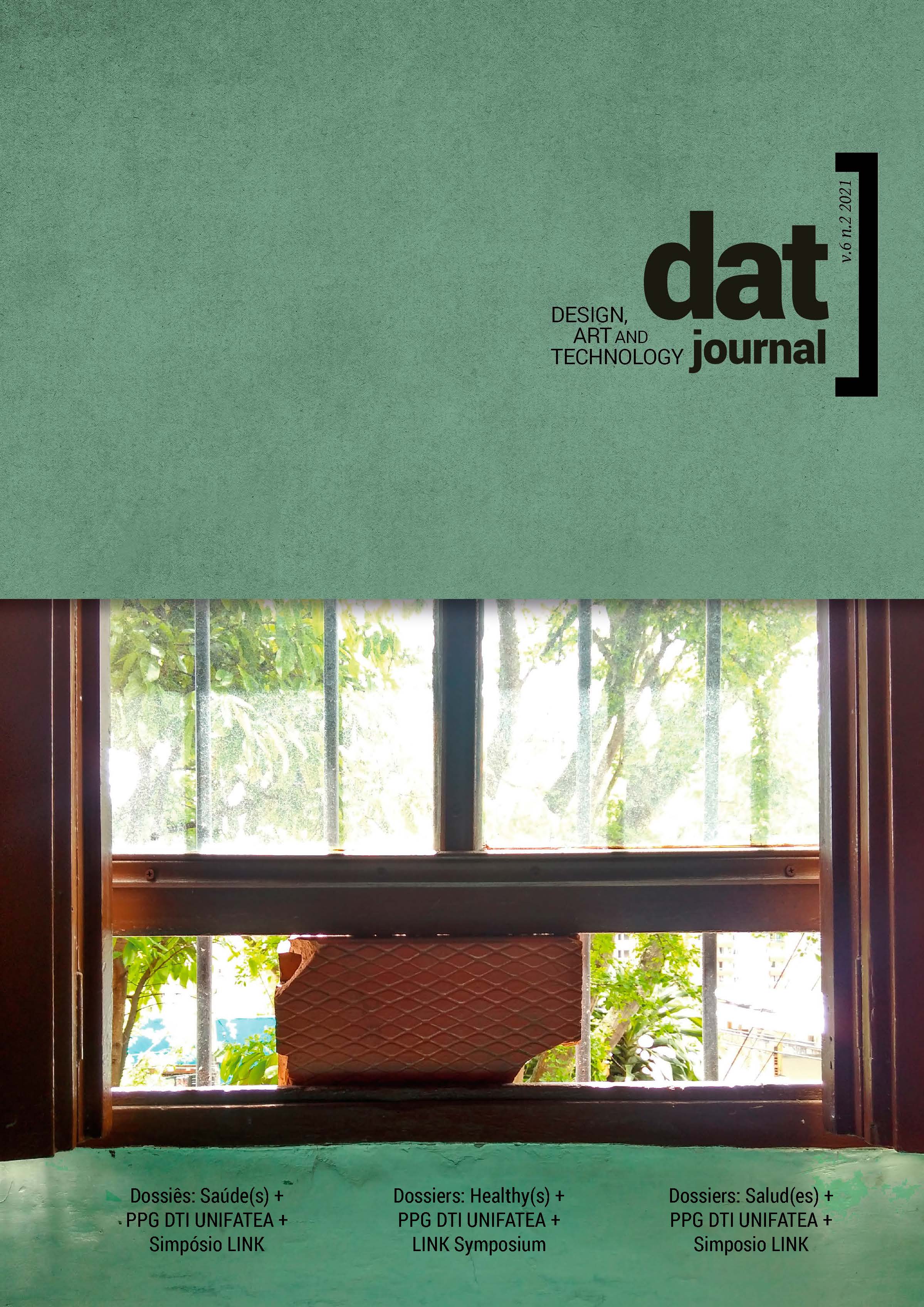Prática fotográfica contemporânea: metodologia expandida e formas críticas do pensamento
DOI:
https://doi.org/10.29147/dat.v6i2.414Palavras-chave:
Imagens baseadas em lente, Fotografia, Construção de lugar, Metodologia, Pesquisa orientada pela práticaResumo
A prática fotográfica contemporânea avançou em um amplo território de fluxos e modalidades representacionais. Este é um momento estimulante para artistas que trabalham com imagens baseadas em lentes e pesquisadores orientados pela prática dispostos a explorar modos expandidos de investigação acadêmica conectados ao meio da fotografia. Neste artigo, extraio ideias metodológicas importantes do projeto de doutorado, Place Imaginaries: Photography and Place-making at Te Awa River Ride. Eu exploro as relações entre a fotografia e a criação de lugares e como a fotografia está inserida nesses processos. Como fotógrafo e artista, desenvolvi uma metodologia baseada na prática fotográfica e na iteração de trabalhos de curadoria fotográficos. Te Awa River Ride é o local de pesquisa, um caminho que margeia o rio Waikato, na parte central da Ilha Norte da Aotearoa Nova Zelândia. A prática fotográfica ou prática baseada em lentes está localizada no centro de abordagens metodológicas de pesquisa com fotografia; um espaço que informa desenvolvimentos de pesquisa teóricos e práticos a caminho de modos críticos de investigação acadêmica.
Downloads
Referências
Berger, J. (1980). About Looking. Writers and Readers Publishing Cooperative, LTD.
Bergson, H. (1911). Matter and memory. George Allen.
Bergson, H. (2001). Creative evolution. Electric Book Co. http://site.ebrary.com
Bishop, C. (2005). Installation art: A critical history. Tate.
Boast, R., & Hill, R. S. (Eds.). (2009). Raupatu: The confiscation of Māori land. Victoria University Press.
Butt, D. (2017). Artistic Research in the Future Academy. Intellect.
Celant, G. (1996). A visual machine. Art installations and its modern archetypes. In R. Greenberg,
B. W. Ferguson, & S. Nairne (Eds.), Thinking about exhibitions (pp. 371–386). Routledge.
De Oliveira, N., Oxley, N., & Petry, M. (2006). Installation art in the new millennium: The empire of the senses. Thames & Hudson.
Deleuze, G. (1988). Bergsonism. Zone Books.
Deleuze, G. (1989). Cinema 2: The time-image. University of Minnesota Press. https://monoskop.org/images/6/68/Deleuze_Gilles_Cinema_2_TimeImage.pdf
Deleuze, G., & Guattari, F. (1994). What is philosophy? (G. Burchell & H. Tomlinson, Trans.). Verso.
Egert, G. (2016). Barbara Glowczewski, Totemic Becomings. Cosmopolitics of the Dreaming. Book Review. Anthrovision. Vaneasa Online Journal, 4.1. http://anthrovision.revues.org/2291
Fisher, M. (2016). ‘I riro whenua atu me hoki whenua mai’: The return of land and the Waikato-Tainui raupatu settlement. Journal of New Zealand Studies, 23, 19–36.
Hill, R. (2019). Place imaginaries: Photography and place-making at Te Awa River Ride [Thesis, The University of Waikato]. https://researchcommons.waikato.ac.nz/handle/10289/12797
Hill, R. (2020). Post-photography: Lens-based methodology and practice-led ways of critical thinking. In Link Symposium Abstracts 2020 (pp. 28-29)
King, C. M., & Roa, T. om. (2015). The Maori of the Central North Island before 1860. In C. M.
King, D. J. Gaukrodger, & N. A. Ritchie (Eds.), The drama of conservation: The history of the Pureora Forest, New Zealand (pp. 43–66). Department of Conservation, NZ & Springer International. https://doi.org/10.1007/978-3-319-18410-4_3
King, M. (2013). Te Puea: A life. https://www.overdrive.com/search?q=C275DBBF-A11C-4FAB-A5C7-AD53E410D0AA
Köhler, M. (Ed.). (1989). Constructed realities: The art of staged photography. Edition Stemmle.
Leavy, P. (2014). Method meets art: Arts-based research practice (2nd ed.). The Guilford Press. http://site.ebrary.com/lib/alltitles/docDetail.action?docID=11001927
Massey, D. B., Allen, J., & Sarre, P. (Eds.). (2007). Human geography today. Polity Press.
Muru-Lanning, M. (2016). Tupuna Awa: People and politics of the Waikato River. Auckland University Press.
Sonn, C. C., Quayle, A. F., & Kasat, P. (2015). Picturing the wheatbelt: Exploring and expressing place identity through photography. American Journal of Community Psychology, 55(1–2), 89–101. https://doi.org/10.1007/s10464-014-9686-7
Waikato Raupatu Lands Trust. (2008). Waikato Raupatu River Settlement: Information package, August 2008. Author.


























